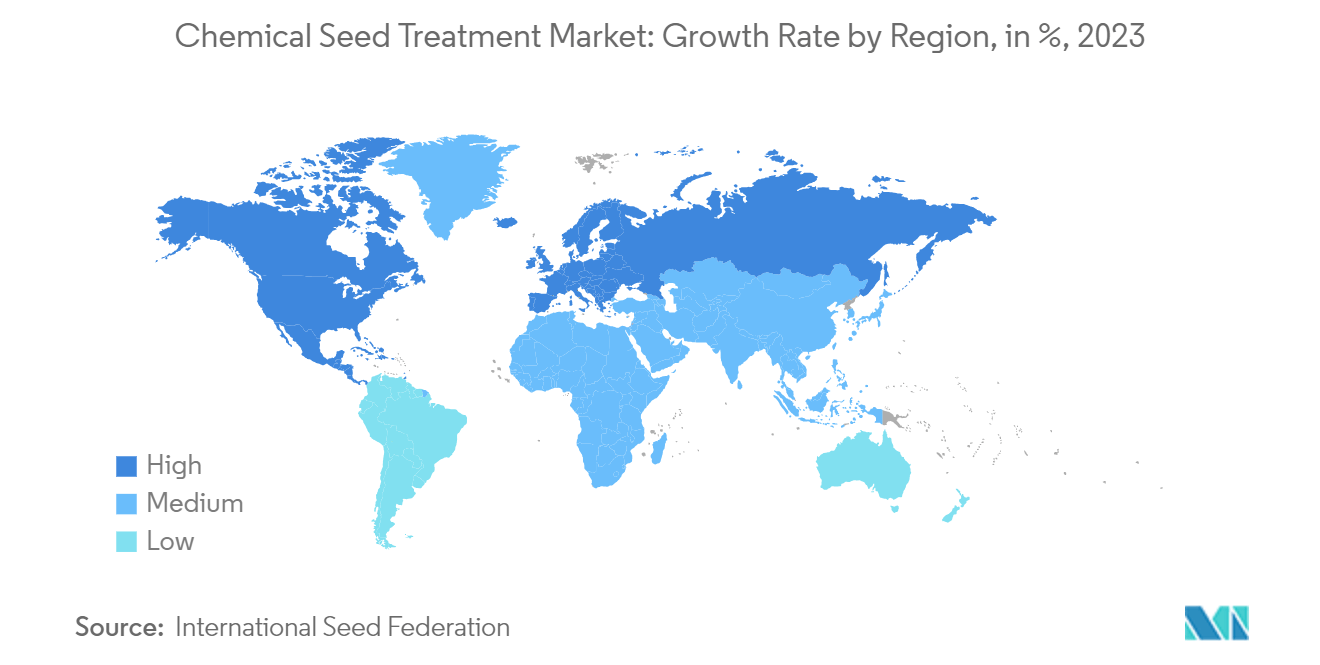Market Trends of Chemical Seed Treatment Industry
Focus on Improving Crop Yields is Driving the Market
The need to enhance crop productivity has significantly increased the adoption of advanced agricultural solutions, particularly chemical seed treatments. According to the Food and Agriculture Organization of the United Nations (FAO), 20% to 40% of global crop production is lost annually due to pest damage. Plant diseases cause an annual economic loss of approximately USD 220 billion, while invasive insect species cost the global economy around USD 70 billion annually, according to the Food and Agriculture Organization of the United Nations. Chemical seed treatments have become essential in addressing these challenges by improving seed performance, protecting against pests and diseases, and supporting overall plant health, thus enhancing crop yields and reducing losses.
The growing demand for food is increasing the use of chemical seed treatments for crops, fostering collaboration between companies to ensure a continuous supply of these products. For instance, in 2023, Syngenta Crop Protection partnered with Aphea. Bio to accelerate the introduction of a novel biological seed treatment solution. ACTIV by Aphea.Bio, a biostimulant applied as a seed treatment on wheat based on beneficial microorganisms, will be introduced across multiple European countries over the next five years.
World Bank data shows that the global population has been steadily rising, reaching 8.2 billion in 2024, an increase from 8 billion in the previous year, as reported by Worldometer. Consequently, chemical seed treatment has become a key tool to maximize crop productivity and address challenges in modern agriculture, supporting market growth.
Furthermore, global cropland has been expanding significantly each year, reaching approximately 1.63 billion hectares in 2023. This steady increase in agricultural land has created a rising demand for large volumes of seeds, driving the need for effective chemical seed treatments.

Asia Pacific Dominates the Market
Asia Pacific is the primary consumer of chemical seed treatment globally. The region's adoption of this technology is driven by its potential benefits, including improved crop establishment, enhanced plant health, increased yield potential, and better control of seed and soil-borne diseases. The major crops produced in Asia, such as rice, sugar beet, fruits and vegetables, cereals, and grains, often require seed treatment. Rice, a staple crop in many Asian countries, frequently receives chemical seed treatments to protect against diseases like blast and bacterial leaf blight, which are prevalent in the region.
India, China, Australia, Indonesia, and Vietnam are increasing their utilization of seed protection and enhancement products for both annual and perennial crops. The extensive agricultural areas in these countries significantly contribute to the demand for chemical seed treatment products. World Bank data for 2023 reports arable land in India, China, Australia, Pakistan, and Indonesia at 155.3, 119.4, 30.6, 30.9, and 26.3 million hectares, respectively. These vast cultivation areas increase the incidence of pests and diseases, making seed treatment products essential inputs for reducing production costs by minimizing the need for chemicals in subsequent cultivation stages.
The widespread adoption of seed treatment in the Asia-Pacific region is driven by the availability and affordability of products and equipment. Major companies like Syngenta, BASF, and Bayer have a strong presence in these markets, regularly introducing new products and conducting field trials and training sessions to demonstrate the benefits of seed treatments. For instance, in 2023, Syngenta Crop Protection's Seedcare business launched EQUENTO in Asia, a new seed treatment that targets various soil pests while promoting sustainable farming practices. The combination of extensive agricultural lands, the need for increased productivity, and the accessibility of seed treatment solutions are key factors driving market growth in this region.


